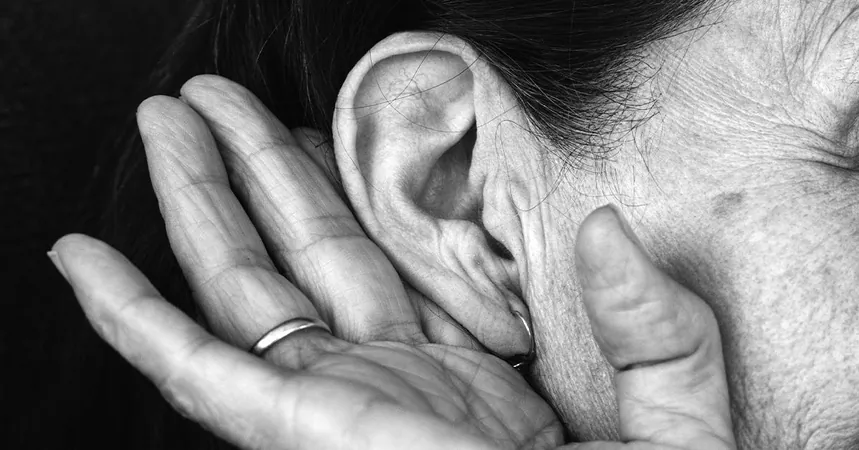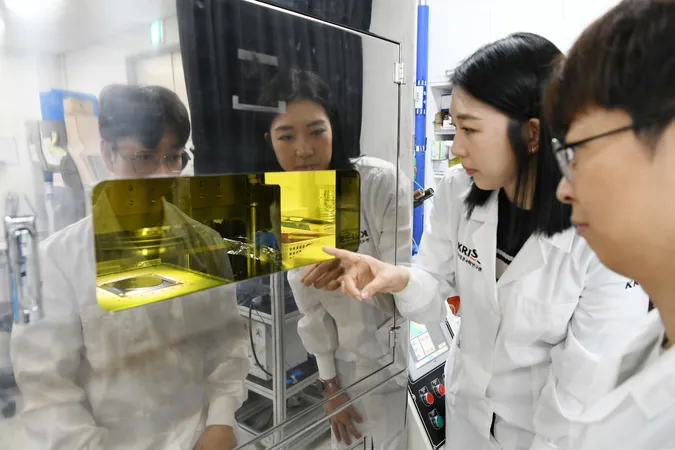
Revolutionary Ear Devices May Lead to Early Detection of Alzheimer's Disease!
2025-01-03
Author: Rajesh
Introduction
Alzheimer's disease, a devastating form of dementia, continues to haunt millions worldwide. Characterized by memory loss, confusion, communication difficulties, and mood changes, the search for reliable early detection tools is more critical than ever. Currently, diagnosing this complex disease involves an elaborate combination of cognitive assessments, cerebrospinal fluid analysis, blood tests, and brain imaging, which often leaves healthcare providers searching for more effective solutions.
Innovative Research on Hearables
Now, cutting-edge research is turning its attention to an innovative avenue—earpiece microphones, known as hearables. Scientists believe that these noninvasive devices could help in the early detection of Alzheimer’s and other neurodegenerative diseases such as Parkinson’s, potentially transforming the way we approach these conditions.
Breakthrough Study
Researchers from Montreal’s École de Technologie Supérieure and Dartmouth's Geisel School of Medicine are at the forefront of this groundbreaking study. Recently, Miriam Boutros, a Master’s student, presented her research titled “Towards the Detection of Alzheimer’s Disease through Eye Movement Changes Using a Hearable” at the 187th Meeting of the Acoustical Society of America.
Mechanism of Hearables
The researchers aim to tackle the challenge of early diagnosis by exploring the vibrations produced from eye movements—which are connected to brain function—and capturing them through in-ear microphones. As individuals with Alzheimer’s often experience impaired motor control and slower eye movements, analyzing the vibrations in the eardrums could yield significant insights into cognitive health.
How Hearables Work
How do these hearables work? As our eyes perform saccades—rapid movements from one focal point to another—they generate minute vibrations. By analyzing these vibrations, the research team hopes to develop algorithms capable of detecting the subtle physiological signals that may signify the onset of Alzheimer’s disease. Boutros states, “Patients with Alzheimer’s tend to have shorter, more erratic saccades. These in-ear microphones are excellent for tracking these eye movement changes.”
Study Design
Boutros elaborated on the capabilities of the hearables, stating, “We can actually monitor heartbeat, breathing patterns, and even eye movements.” By recruiting participants diagnosed with Alzheimer’s and mild cognitive impairment, the study plans to compare data collected from hearables against more traditional eye movement tracking systems to better understand the relationship between eardrum oscillations and eye movements.
Long-term Vision
The long-term vision behind this research is ambitious: to create a wearable device that could continuously monitor brain health and potentially identify neurodegenerative disorders earlier than current methods allow. Medical professionals, including Dr. Alexander Solomon, a neuro-ophthalmologist, are intrigued by this technology's potential but caution that various real-world variables could complicate data collection.
Expert Opinions
“With any new technology, we must consider how external factors could influence results. While these devices offer early screening opportunities in familiar environments, we must also understand that laboratory methods may still provide quicker and more accurate assessments,” Dr. Solomon noted.
Conclusion
Nevertheless, the promise of using hearable technology to change the landscape of Alzheimer’s detection is exciting. As the journey toward earlier diagnosis continues, harnessing the power of wearables could be revolutionary. Detecting Alzheimer’s sooner can lead to timely interventions, providing patients with a better quality of life and potentially delaying the progression of the disease. Stay tuned as this groundbreaking research unfolds—innovation could be just around the corner!






 Brasil (PT)
Brasil (PT)
 Canada (EN)
Canada (EN)
 Chile (ES)
Chile (ES)
 Česko (CS)
Česko (CS)
 대한민국 (KO)
대한민국 (KO)
 España (ES)
España (ES)
 France (FR)
France (FR)
 Hong Kong (EN)
Hong Kong (EN)
 Italia (IT)
Italia (IT)
 日本 (JA)
日本 (JA)
 Magyarország (HU)
Magyarország (HU)
 Norge (NO)
Norge (NO)
 Polska (PL)
Polska (PL)
 Schweiz (DE)
Schweiz (DE)
 Singapore (EN)
Singapore (EN)
 Sverige (SV)
Sverige (SV)
 Suomi (FI)
Suomi (FI)
 Türkiye (TR)
Türkiye (TR)
 الإمارات العربية المتحدة (AR)
الإمارات العربية المتحدة (AR)